Home / News & Blog / Abrasive Blog / The Complete Overview to Brown Fused Alumina and Its Role in the Abrasives Industry
The abrasives industry is a critical component in various sectors, from automotive and manufacturing to metalworking and construction. One of the key materials used in the production of abrasives is brown fused alumina, a form of aluminum oxide that is known for its hardness, durability, and versatility. Whether you are an abrasive manufacturer or someone working in industries reliant on these materials, understanding the importance of brown fused alumina and its place in the broader market is crucial.
In this article, we will explore what brown fused alumina is, how it is made, its applications in abrasive products, and its role in the supply chain. We will also touch on the leading abrasives manufacturers in the industry and discuss the broader category of aluminum oxide abrasives and their significance.
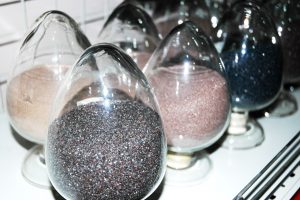
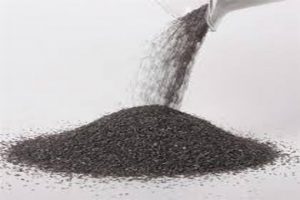
Brown fused alumina (BFA) is a high-performance material primarily composed of aluminum oxide (Al2O3). It is produced by fusing bauxite, a natural ore containing aluminum oxide, in an electric arc furnace at high temperatures of around 2,000°C (3,632°F). The result is a hard, tough, and durable material that is ideal for use in abrasive products such as grinding wheels, sandpaper, and blasting media.
Brown fused alumina is typically brown in color due to the presence of iron oxide impurities, though it can also have other hues depending on the impurities present in the raw materials. Its hardness (9 on the Mohs scale) and high melting point make it suitable for demanding applications in industries where precision, strength, and reliability are essential.
The manufacturing process of brown fused alumina involves several precise steps to ensure a consistent and high-quality product:
1. Raw Material Selection
High-grade bauxite, rich in aluminum oxide, is the primary raw material. It is combined with coke and iron filings to enhance its hardness and toughness.
2. Fusion Process
The raw materials are heated in an electric arc furnace at temperatures exceeding 2,000°C (3,632°F). This process melts the components, forming a molten mass of fused alumina.
3. Cooling and Crushing
The molten material is allowed to cool and solidify. Once hardened, it is crushed into angular particles.
4. Screening and Grading
The crushed material is sieved into different grain sizes to suit various industrial applications, from coarse grains for blasting to fine grains for polishing.
5. Quality Control
Rigorous quality checks ensure that the final product meets industry standards for hardness, purity, and grain size distribution.
Brown fused alumina is an essential component in several abrasive products due to its superior hardness, toughness, and wear resistance. The following are some of the primary applications of brown fused alumina:
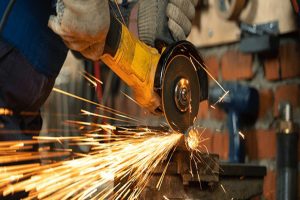
Grinding wheels are one of the most common applications of brown fused alumina. Due to its hardness, BFA is ideal for precision grinding of metals, including steel, cast iron, and non-ferrous materials. It is commonly used in the manufacturing of bonded abrasive products such as grinding discs and wheels. These products are used in industries such as automotive, aerospace, and general manufacturing, where high-speed grinding is required.
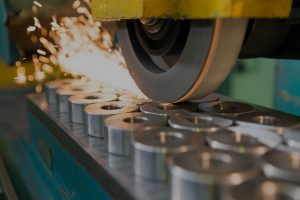
In addition to grinding, brown fused alumina is often used for polishing and surface finishing. It can be used to smooth rough surfaces and create a polished, reflective finish on metals, plastics, and other materials. This makes it popular in industries such as jewelry making, automotive parts manufacturing, and the production of household goods like stainless steel sinks and kitchenware.
Brown fused alumina is frequently used as an abrasive blasting media for cleaning, etching, and surface preparation. Its high hardness and durability make it effective at removing rust, corrosion, old paint, and other contaminants from metal surfaces. The material’s sharp edges also contribute to a high-quality finish when used in sandblasting.
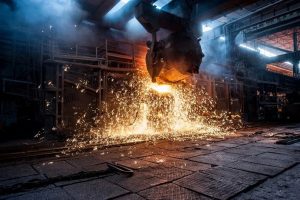
Another important use of brown fused alumina is in refractory products. Because it can withstand high temperatures, it is often used as a raw material in the production of bricks, castables, and other refractory products used in high-temperature environments such as furnaces and kilns.
Brown fused alumina is a key ingredient in the production of bonded abrasives, which include grinding wheels, cut-off wheels, and other abrasive tools. These tools are used across a variety of industries for shaping, cutting, and finishing metals, ceramics, and composite materials.
While brown fused alumina is one of the most widely used forms of aluminum oxide in abrasives, it is not the only one. Aluminum oxide abrasives can be found in other forms, such as white fused alumina and black fused alumina, each with its specific properties and uses.
White fused alumina is made from the same process as brown fused alumina but uses higher-purity bauxite and is produced in a higher-temperature furnace. The result is a material that is much harder and more friable (breaks down more easily under stress), making it suitable for precision applications where a fine finish is required. It is often used in the manufacture of products such as grinding wheels, polishing compounds, and coatings.
Black fused alumina is produced in a similar way to brown fused alumina but uses lower-grade bauxite and coke. This type of alumina has a lower hardness and is typically used in applications where less aggressive cutting action is needed, such as in non-ferrous metal finishing and some cleaning applications.
Abrasives manufacturers play a critical role in the global supply chain by producing and distributing abrasive products to industries that rely on them. They transform raw materials like brown fused alumina and other aluminum oxide compounds into usable abrasive products such as grinding wheels, sandpaper, and blasting media.
These manufacturers must adhere to strict quality control standards to ensure that their products meet the required specifications for various applications. Additionally, they must stay abreast of technological advancements in the industry, as new materials and processes continue to emerge.
In the highly competitive abrasives market, manufacturers also need to address customer demands for customized solutions. For example, some industries may require abrasives with specific grain sizes, bonding agents, or hardness levels, which means that manufacturers must have the flexibility to produce tailored solutions.
Key Players in the Abrasives Industry:
1. DOMILL Abrasive
DOMILL Abrasive is one of the top fused alumina manufacturers in China. It was established in 1993 and has two subsidiaries. The company specializes in the production of abrasive grains and powders for abrasive tool manufacturing, sandblasting media, refractory materials, industrial ceramics, grinding and polishing, fillers and additives, etc. The products are widely used in many fields of manufacturing. DOMILL Abrasive is strictly managed by the ISO9001 quality system and has established long-term cooperative relationships with customers. While providing a large number of abrasive materials, it also customizes particle size standards for customers to create unique product value.
2. Saint-Gobain Abrasives
Saint-Gobain Abrasives, headquartered in France, is a global leader known for its innovative solutions and high-quality products like Norton and Flexovit. With a presence in over 20 countries, the company specializes in grinding wheels, coated abrasives, and diamond tools. Saint-Gobain combines advanced R&D with eco-friendly practices to deliver cutting-edge abrasives for industries such as automotive, aerospace, and construction.
3. 3M
Based in the United States, 3M is renowned for blending science and technology to create innovative abrasive solutions, including its precision-shaped grain Cubitron II. Offering products like sanding discs, grinding wheels, and polishing compounds, 3M focuses on improving productivity and worker safety while promoting sustainable practices. The company serves industries such as metalworking, woodworking, and automotive repair.
4. Klingspor
Germany-based Klingspor has over 125 years of expertise in producing coated and bonded abrasives. Known for their sanding discs, grinding wheels, and flap discs, Klingspor focuses on high-quality, durable products backed by continuous technological innovation. They serve a variety of industries, including construction, metalworking, and shipbuilding, and emphasize customer education and product precision.
5. Carborundum Universal Limited
CUMI, headquartered in India, is a leading manufacturer of abrasives, ceramics, and super abrasives like diamond and cubic boron nitride tools. With vertically integrated operations, the company ensures quality control at every stage while offering cost-effective solutions. CUMI serves industries such as automotive, mining, and electronics, delivering reliable and affordable products tailored to diverse markets.
The popularity of brown fused alumina among abrasives manufacturers is largely due to several inherent advantages:
Hardness: Brown fused alumina ranks 9 on the Mohs scale of hardness, making it one of the hardest materials available for abrasive products.
Durability: Its toughness and resistance to wear make it ideal for use in products that need to withstand repeated use and harsh conditions.
Cost-effectiveness: While it is not the most expensive abrasive material, its performance in a wide range of applications makes it an attractive option for manufacturers looking for a balance of quality and cost.
Versatility: Brown fused alumina can be used in a wide variety of industries, from metalworking to construction and even in specialty applications like polishing and surface finishing.
Brown fused alumina is a cornerstone material in the abrasives industry. Its properties of hardness, toughness, and resistance to wear make it indispensable in the production of grinding wheels, sandpaper, sandblasting media, and other abrasive products. As a versatile and cost-effective material, it has found widespread use in various industries, from automotive and aerospace to metalworking and construction.
Understanding the manufacturing process, applications, and advantages of brown fused alumina is essential for abrasives manufacturers, as well as industries that depend on abrasives for precision and efficiency in their operations. By staying informed on the latest developments in aluminum oxide abrasives and their uses, businesses can continue to leverage this powerful material to achieve high-quality results and maintain a competitive edge in the market.
Whether you are an abrasives manufacturer, a buyer, or an end user, understanding the significance of brown fused alumina and its place in the abrasives industry is key to optimizing performance and achieving superior results in various industrial applications.